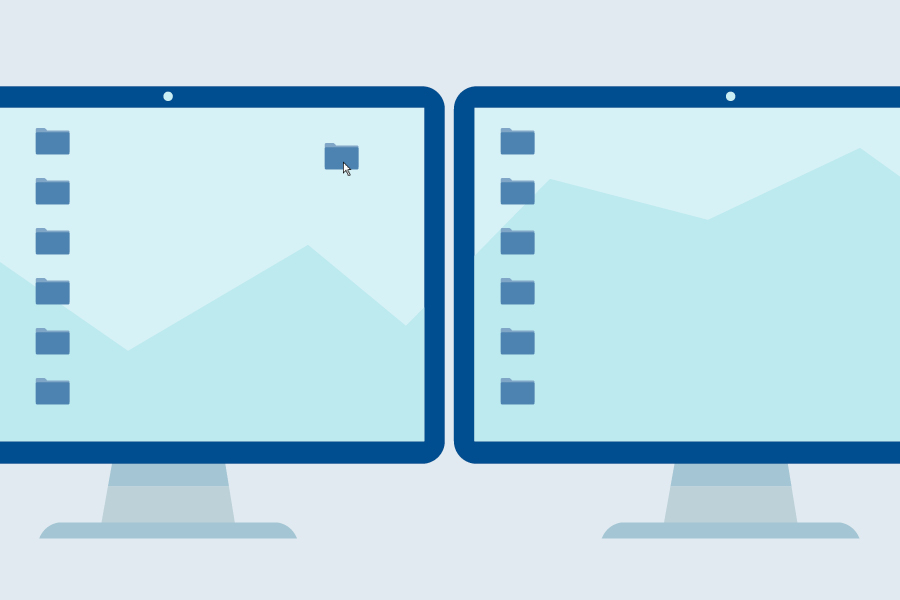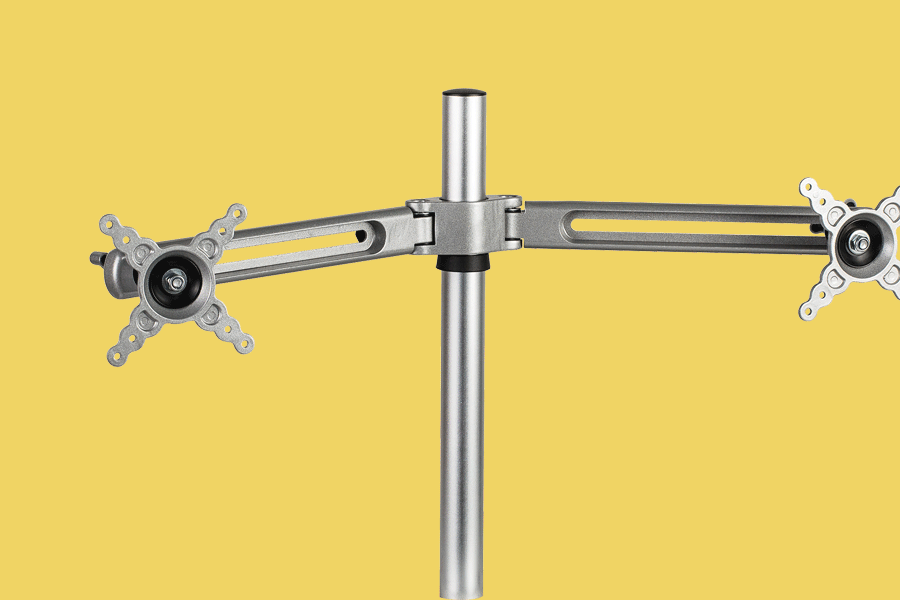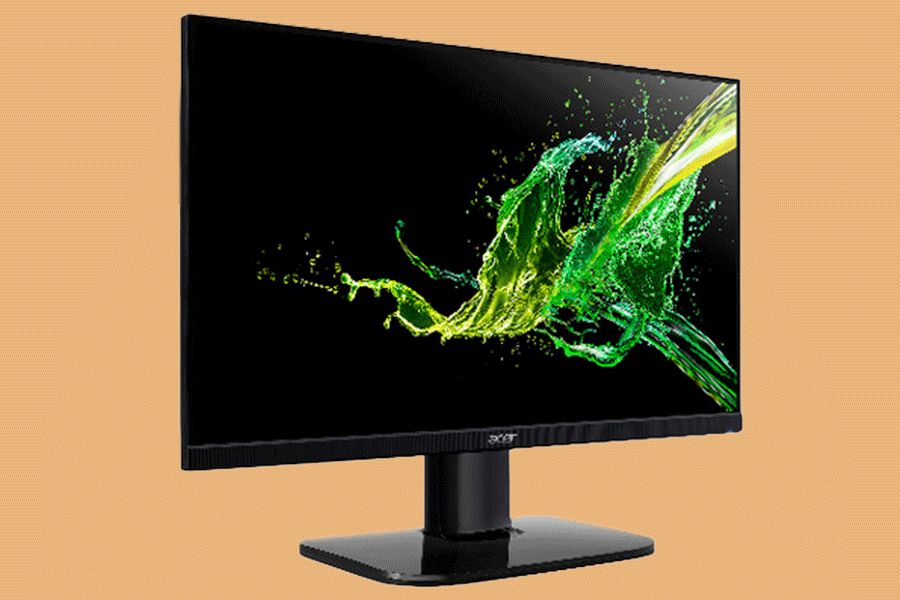Sometimes, one computer monitor just isn’t enough – and the good news is it’s simple to add a second screen to your existing desktop computer or laptop. Using a dual monitor setup increases the size of your desktop, improving your entertainment options and giving you more room to view your work. For example, you could use one monitor to display feedback for a presentation while you action changes on the second screen in front of you, eliminating the need to flick between tabs.
Choosing Your Monitors

Choosing monitors of the same size will allow you to line them up side-by-side as though it was one big screen and makes it easier to move your mouse and documents across both. Opting for the same brand for both monitors will also make it easier to connect and ensure a consistent user experience, with the optimum size ranging from 25.5 to 34 inches.
There are also different options in resolution, including full high definition and 4K UHD (ultra-high definition) for even greater detail. You can choose between a curved or flat monitor: a curved screen allows for a more immersive effect for gaming or viewing content, or a portable display is great for flexibility if you have a hybrid working structure.
Users of laptops can choose to extend their display, using a monitor as one screen and their laptop as the second, or mirror and extend their display using two separate monitors.
Hot Tip: Using a wireless keyboard and mouse for your dual monitor setup will help to minimise cable clutter in your workspace.
SEE ALSO: How to Create a Movement-Friendly Home Office Setup
How to Position Your Monitors Using Dual Monitor Arms and Stands
Before deciding on a dual monitor setup, you need to make sure you have room on your desk to sit them side-by-side. All monitors come with a desktop stand but another option that saves space and ensures the screens are at the right height is the use of dual monitor arms.
Monitors that are VESA mount compatible (they have four screw threads on the back) can be attached to monitor arms such as the Professional Dual Monitor Arm with Dual USB or a stand like the Brateck Gas Spring Dual Monitor Arm.
If adding a second screen to your laptop or you have different-sized monitors, a laptop stand or monitor stand will come in handy to position your screens at a similar height.
Monitors also come with their own power cables, so you need to make sure there are enough powerpoints available, or purchase a powerboard such as the Belkin 4 Outlet Powerboard with 2 USB Ports 2.4A.
What to Try

- Professional Dual Monitor Arm with Dual USB Black
- Brateck Gas Spring Dual Monitor Arm
- Kensington Monitor Stand
- Belkin 4 Outlet Powerboard with 2 USB Ports 2.4A
SEE ALSO: The Best Productivity Tools to Improve Your Workday
How to Connect Your Dual Monitor Setup

The main monitor connections include HDMI, DisplayPort, USB-C and Thunderbolt. To connect your monitors, match the corresponding cable from the back of the laptop or computer to the port on the back of the monitor. For example, one end of the HDMI cable would be connected to the monitor and the other to the HDMI port on the computer. These cables often come with the monitors.
If your computer or laptop doesn’t have enough free ports, or doesn’t have a port to match the monitor’s requirements, you can also purchase an adaptor such as the Comsol USB-C to Dual HDMI 4K Adapter. The other option is to buy a hybrid cable that allows you to connect one end to the HDMI port on the computer and the other end to the DisplayPort on the monitor, such as the Comsol DisplayPort Male to HDMI Male 4K Cable 2m.
What to Try

- Cygnett Unite HDMI to USB-C 4K Cable 1.8m Black
- Acer 22" FHD 100Hz 1ms Monitor KA222Q
- Logitech POP Icon Keyboard/Mouse Combo Lilac
- Comsol Male USB-C to HDMI 4K2K Adaptor
- Comsol USB-C to Dual HDMI 4K Adapter
- Cygnett Unite HDMI to USB-C 4K Cable 1.8m Black
- Comsol DisplayPort Male to HDMI Male 4K Cable 2m
- Lenovo 15.6” Portable USB-C Monitor L15
- Lenovo ThinkVision FHD Touch Screen Portable Monitor M14T
- Acer 27" FHD IPS Monitor KA272"
- Samsung 34" UWQHD 100Hz 5ms Curved USB-C 90W PD Monitor S65TC
Getting the Settings Right
Once the monitors are connected, you will need to adjust your display settings to ensure they’re in the correct arrangement. This will let you move the mouse across both screens and drag windows and documents from one monitor to the other.
To do this, head to your computer’s settings and look for options to set up your system display. You should see a graphic of two monitors, which will give you the option to configure and match how the physical monitors themselves are arranged on your desk. Make sure they are aligned to suit your preferences, then save your settings.
SEE ALSO: 10 Hacks to Make Your Gaming Setup Even Better
Need further assistance with your tech problems? Call Geeks2U on 1300 725 420 or visit geeks2u.com.au
This article was originally published in October 2020 and has been updated.







